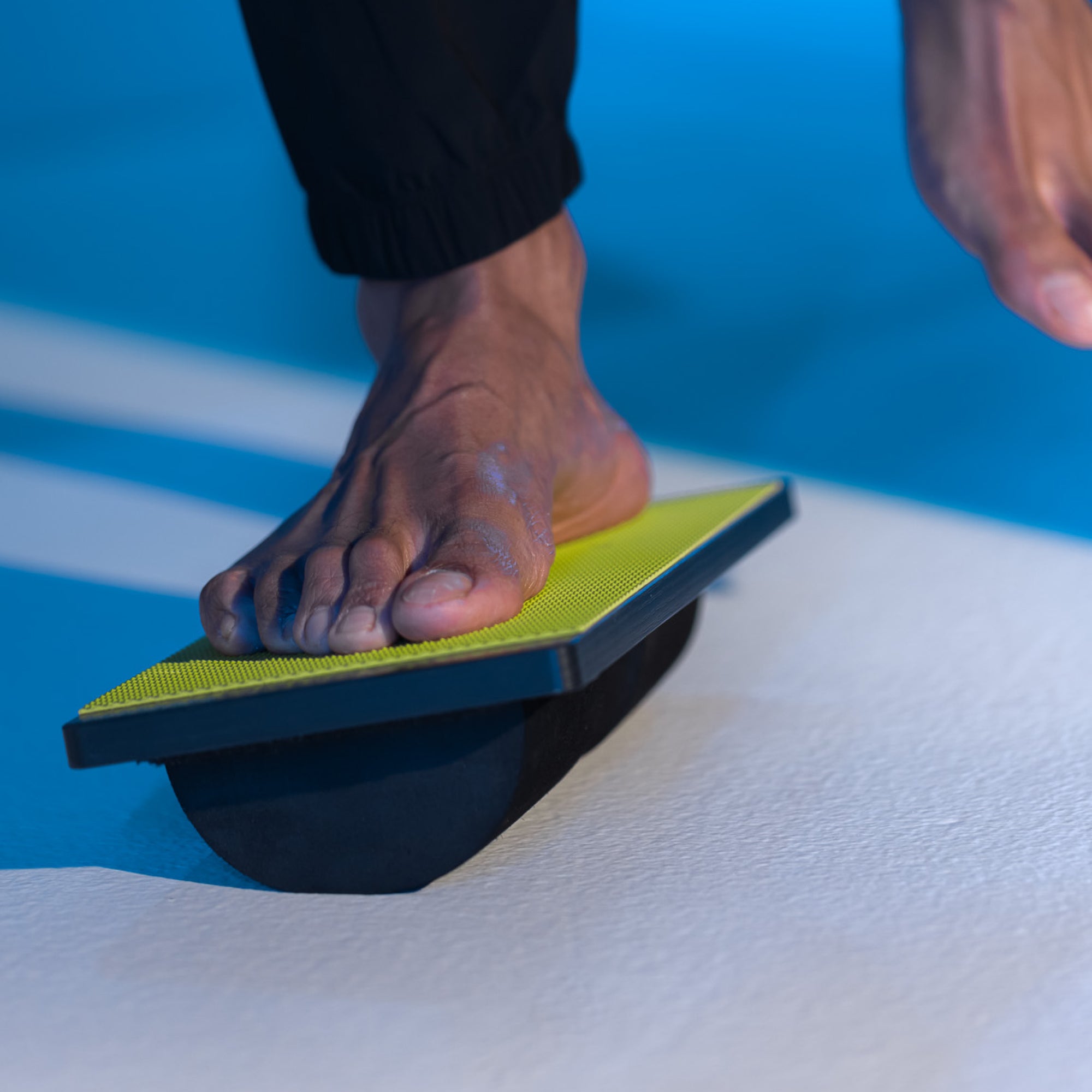Standing Tall | How Balance Begins at Your Base

Did you know the average adult takes 5,000- 8,000 steps a day? And that with each of these steps, there is a moment in time when you are balancing on one leg. In fact, it is our ability to stand on one leg that allows us to walk, go up or down stairs and to run.
Given how important balancing on one leg is, how often do you train your single leg stability?
Most people would say rarely or never.
Standing on one leg is a complex orchestration of anatomy, physics and neurological finesse. You can think of it like a skill – a skill that is to be trained, strengthened and perfected through daily practice.
This blog will review how all balance exercises should begin with your base!
Setting Your Base
Properly standing on one leg begins at your base of support, the foot, and will work its way up the chain.
Begin by taking off your shoes and socks so you can really connect to and feel the ground as you stand. I like to do balance exercises on a hard surface such as a kitchen floor, or on a Naboso Mat as these provide enhanced sensory stimulation to the foot.
Stand with your feet shoulder width apart.
Start by finding your foot tripod which is under the 1st metatarsal head, 5th metatarsal head and the heel. Lift the toes, spread them wide and then place them back down onto the ground.
Just doing these first two steps is already improving your base of support.
To further find proper foot posture I want you to look at your inside arch. Is it rolled in and collapsed? Or elevated? If you notice a collapsed arch, this position is associated with an unlocked and unstable foot. To properly balance on one leg, we need to ensure our foot arch is in a stable and locked position.
To find a stable and locked foot, one must understand how foot movements influence the lower leg, knee and hip.
To further understand this connection we need to demonstrate joint coupling.
Joint Coupling
Continue standing with your feet shoulder width apart and on your foot tripod. Now I want you to intentionally roll to the inside of your foot. Did you see your arch collapse? This movement is referred to as eversion.
Now roll to the outside of your foot. Did you see your arch lift? This movement is referred to as inversion.
Repeat this several times. Rolling from the inside of the foot to the outside of the foot. I want you to see and feel how your legs, knees and hips rotate as you roll your foot in and out.
Do you feel that every time you roll your foot in, that your legs, knees and hips also roll in? This is referred to as internal rotation.
Whereas when you roll your foot out, your legs, knees and hips also roll out. This is referred to as external rotation.
What I am demonstrating to you is what’s referred to as joint coupling. Joint coupling is the movement of one joint simultaneously influencing the movement of a neighboring joint.
In this case, the joint couples to remember are foot eversion (drop of the arch) creates internal rotation of the leg, knee and hip – and – foot inversion (lift of the arch) creates external rotation of the leg, knee and hip.
So, let’s go back to setting our stable base.
Feet shoulder width apart, on your foot tripod, toes spread wide and if you need to lift your arch, I want you to externally rotate your hips and legs to stabilize the foot.
The final step is setting the base is to create toe purchase, or activation of your toe muscles. This is best done through an exercise called forward lean.
Forward Lean Exercise
Stay standing as your are, but now I want you to imagine you are standing tall and stiff as a board. Stay stiff as a board and I want you to slightly lean forward. Then return back to vertical. Do this again. Slight lean forward. Then return to vertical.
Every time you subtly shift your body weight forward do you feel the activation of your toes? It may feel like your toes are anchoring or gripping into the ground.
This forward lean exercise is activating a postural reflex in your nervous system that is designed to prevent your body from falling over. This activation of your toes is specifically targeting your toe flexors which play a critical role in upright stance and balance.
The final step in creating a stable base is finding this toe flexor activation without leaning your body forward.
As you stand tall, with your feet in a stable position, can you push all ten toes down without leaning the body forward?
To further integrate this exercise, as you push the toes down into the ground I want you to exhale your breath slowly and continuously for 5 seconds. Inhale and relax your toes. Exhale and repeat for 5 seconds.
As you proceed into the next steps of single leg training, always remember that balance begins at your base. Your foot posture and foot strength directly influences the single leg stance and all the dynamic movement that requires this functional position.
Want to jump higher or run faster, it all starts – from the ground up!
